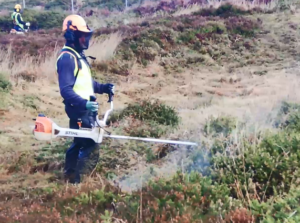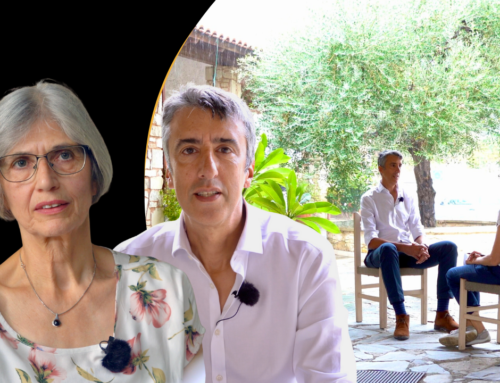Purpose of SUAS
The main objective of the SUAS project is to develop a blueprint for future upland agri-environmental schemes that will support farmers to deliver the management required to bring our upland habitats back into good condition.
A lack of profitability from upland farming and has led to management decisions been driven by the various agri & agri-environmental schemes available, which have not delivered the management required to maintain or improve habitat quality. Available reports on the status of our upland habitats have shown that they are in Bad Condition and showing no signs of improvement despite the efforts of various agri-environmental schemes in Ireland since 1994.
In 2011, Wicklow Uplands Council formed a vegetation management committee to look at the issue of habitat quality on the Wicklow/Dublin Uplands. They invited all the relevant stakeholders, including farm organisations, Teagasc, National Parks & Wildlife Services, land owners, environmental groups, forestry groups, recreational users and any individuals who had an interest to be involved. Over 6 years, this committee held various meetings, workshops, walks, commissioned studies, etc. to develop the concept of the current SUAS Project.
The situation in the Wicklow/Dublin Mountains was highlighted nationally in a 2013 study, commissioned by this committee, to identify best management of uplands through farming. A Teagasc study in 2015, initiated by this committee, quantified the extent of the changes to the grazing patterns and the reasons why farmers have made those changes. We now have intensive grazing in the late summer period and major reductions in grazing at other times of the year leading. Uncontrolled burning has also been a major influence on habitat quality, often with CAP payments being the driving force behind the setting of these fires.
In 2017, the committee made a successful application to the Department of Agriculture for funding under the European Innovation Partnerships initiative (EIP), with the SUAS EIP project commencing in early 2018. An operation group was put together, consisting of local stakeholders and people with the required expertise to deliver this ambitious project, to oversee the management of the SUAS Project. Declan Byrne, who was one of the driving members from the initial formation of the vegetation control committee to the drafting of the final project submission, was appointed as project manager. He is currently seconded from Teagasc to fill this role.
One of the main innovations of the SUAS project is the creation of Commonage Groups (CG) for the management of commonages. While commonage farmers may have traditionally worked together for stock management activities like gathering sheep, we have no history of formal arrangements for making communal management decisions that exist in other countries. Previous agri-environmental schemes have unsuccessfully attempted to deal with commonage shareholders as individuals. Management plans requires coordinated delivery by all active shareholders so unless you engage with them collectively, the chances of delivery are remote. SUAS has developed a facilitation process and constitution templates for the formation of these commonage groups and all dealings with a commonage are through these groups. They have been positively received by the farmers who see the benefits of having a forum for discussion and planning for their commonages.
Another innovation is that all sites, whether commonage or non-commonage, have a baseline survey carried out by an ecologist to determine what the current condition of the habitats are. The farmers and ecologist then develop a management plan specific to their area, which will deliver habitat improvement and be deliverable by the farmers. The ecologist brings the expertise around what the various habitats require while the farmers bring the practical experience of managing the hills and they are the ones who will be delivering this management. Upland habitats occur in mosaics and have a range of influencing pressures which require an appropriate plan, which generic habitat plans or offering menus of actions to farmers will not deliver.
Grazing is the most important habitat management tool that we have at our disposal. Grazing is what has created these upland habitats in the first place and if grazing is removed, then our habitats will ultimately develop to some form of woodland. The numbers of grazing animals is important but also the timing of the grazing, the areas of the hills grazed and the types of grazing animal are also very important factors, particularly on hills with multiple pressures and issues. As we carry out habitat improvement works, the required grazing will also change, so the appropriate stocking rate is something that can change over time rather than being some magic number we can sit down at a desk and calculate.
The SUAS project is supporting participants to deliver various habitat management actions required for habitat management, including; controlled burning, cutting & mulching of overgrown vegetation both by hand and using machines, bracken spraying, bracken bruising, use of cattle & horse grazing for vegetation control, drain blocking, upland gully planting and various peat restoration techniques. There are a lot of possible actions available, but the real question for us is how practical they are in terms of where they can be delivered, how they can be delivered, what results they will yield and at what cost. Farmers are paid for their time in delivering these actions, but where they are unable or unwilling to carry them out themselves, the project is hiring in contractors. We need to think of investment in these projects as being for delivery of habitat management rather than as income for farmers, so in some circumstance (especially involving the use of specialised machinery), the use of contractors is the most appropriate method of delivery.

Controlled burning carried out by a commonage group.

Vegetation management by hand


